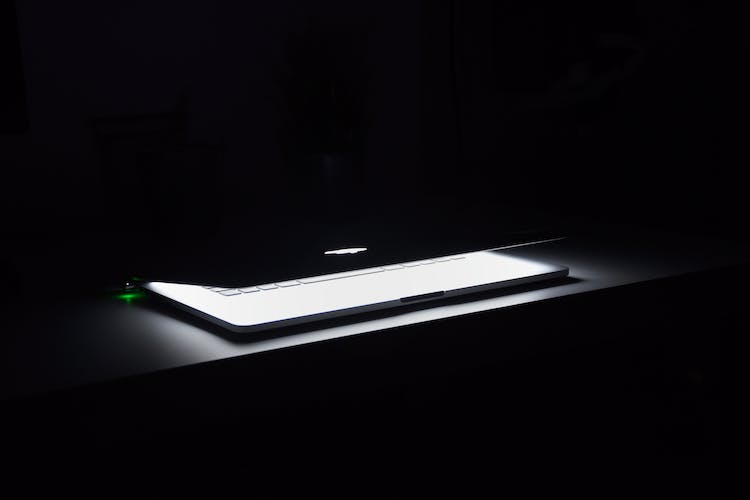As the DIY home improvement projects continue to grow in popularity, one of the tools that is gaining a reputation for being efficient and effective is laser cutting sheet metal. Using precision laser technology, sheet metal can now be cut, shaped and finished in a fraction of the time as traditional cutting tools. This article will discuss why laser cutting sheet metal is beneficial for DIY projects, the various types of lasers available, and the different ways sheet metal can be used in home projects.
Preparing Your Sheet Metal
Steps to take before cutting
Preparing your sheet metal for laser cutting is an important step before you start your DIY home project. You need to make sure your metal is clean, free from oils, dust, and any other debris that might impede or inhibit the cutting process. Additionally, you need to decide on the size of the metal pieces for your project and mark them correctly before cutting.
- Select Appropriate Sheet Metal: Picking the right type of sheet metal for your DIY project is important as different types are designed to fit specific applications. Aluminum, stainless steel, brass and copper are all common choices for laser cutting.
- Correctly Measure and mark the Sheet Metal: Laser cutting is incredibly precise, so making sure to use a measuring tape to measure, mark and double check the dimensions of your project is essential to ensuring a successful result.
- Finish the Edges: Before laser cutting, make sure to finish the edges of the sheet metal, using either a deburring tool, or a file to ensure that the edges are smooth. This will help prevent any damage to the laser cutter and will help your product looking neat afterwards.
- Mark Off Cutting lines: Mark off not only the areas that you need cut, but also the outside border of the sheet and the areas around it that you don’t want cut, to ensure that the laser doesn’t mistakenly cut any areas that will ruin the shape of the project.
- Attach stabilizer: Attaching a stabilizer to your sheet metal will ensure that the sheet is held in place during the laser cutting process, preventing any shifting of
Select the sheet metal
sheet Metal When you are laser cutting sheet metal for a home DIY project, selecting the sheet metal you will use is an important part of the process. Of course, you want to select sheet metal that’s both practical and aesthetically pleasing to your project, but the thickness and grade of your sheet metal are equally as important. The most commonly available sheet metals are mild steel, an alloy of carbon and iron; stainless steel; aluminum; copper; brass; and titanium.
Mild steel is the most commonly used and least expensive form of steel.
Determine the size and shape of the sheet metal
Sheet Metal When beginning a DIY sheet metal project, one of the first things you need to do is determine the size and shape of the sheet metal you’ll need for your project. It’s important to have this decided from the start since different projects will require different sizes and shapes of sheet metal. Some of the shapes that you might use include round, square, rectangular, oval, and hexagonal.
When determining the size of your sheet metal, you need to consider the size of your project.
Clean and prepare the sheet metal
Metal Projects When planning a home DIY metal project, one of the most important steps is to make sure your sheet metal is ready for laser cutting. Cleaning and prepping the sheet metal is a vital part of the process, as it will ensure the laser cut is precise and accurate. The first step is to remove grease, dirt, oil, and any other material that may be present on your sheet metal.
This is important as it will affect the oxygen used in the cutting process, and any contamination may cause problems during the cutting.

Maintaining the Sheet Metal
Inspect the sheet metal for any irregularities
Sheet Metal Inspecting the sheet metal before your laser cutting project is essential in order to ensure its quality and stability while cutting. It is important to look out for any deformations, dents, scratches, or inconsistencies in the surface of the metal that might make the cutting process more difficult. Pay close attention to the edges and corners of the metal to make sure the material is in good condition.
If there is any warping or bending, it might lead to an off-centered cut.
Ensure the surface is clean and free of dirt
Sheet Metal When it comes to laser cutting sheet metal for home DIY projects, the quality of the cut largely depends on the surface you are cutting. Before beginning any kind of metal cutting project with a laser, it’s important to ensure that the metal surface is free from dirt and grease as these can cause problems such as inconsistent cutting and clogged nozzles.
Have the sheet metal cut to size and shape if necessary
Sheet Metal If you’re looking to get into DIY home projects involving sheet metal and want to properly maintain it, then laser cutting is one of the best options for getting the job done. Laser cutting requires precision and accuracy and is especially useful for quickly and accurately cutting various shapes and sizes of sheet metal. To get the most out of this process, it’s best to have the sheet metal cut to size and shape if necessary, as laser cutting machines are powerful and can process large amounts of materials and quickly cut perfect shapes.

Laser Cutting Sheet Metal
Understanding the Process
Sheet Metal Laser cutting is becoming a popular option for creating precise and intricate pieces of sheet metal for home DIY projects. As the technology and know-how for laser cutting becomes more accessible, more and more people turn to this tool for their projects. However, creating successful laser cut pieces of sheet metal requires an understanding of the process.
The process for laser cutting sheet metal begins with a computer-aided design (CAD) program that is used to create the design that will be cut out of the sheet metal.
Selecting the right materials
Metal Projects When it comes to selecting the right materials for your laser cutting sheet metal project, it’s important to choose a material that is compatible with your desired cutting outcome. Common metals used for laser cutting projects are carbon steel, aluminum, stainless steel, aluminium alloy, and brass. Among these materials, the most popular choice for cutting metal is carbon steel – it’s widely available and costs less than other cutting metals.
Carbon steel is a strong and durable metal, making it an excellent choice for projects that require a precise cut with no distortions or inconsistencies.
Setting up the laser cutter
Sheet Metal If you’re looking to get into laser cutting sheet metal for your DIY projects, the first step is to set up the laser cutter. Generally, this will involve making sure there’s a suitable laser cutter, a power supply, focusing optics and a motion control system. Each of these components will require electricity and a certain amount of technical knowledge to set up, but it is possible to get the basics down with some practice.
Preparing the sheet metal for laser cutting
Sheet Metal If you are looking to take on some DIY home projects that involve working with sheet metal, laser cutting is one of the best ways to get the job done! Laser cutting provides precise and accurate cutting capabilities, resulting in a more professional finish. When preparing sheet metal for laser cutting, there are some crucial elements to keep in mind.
Before even beginning the process, it’s important to consider the thickness and type of material that you are working with. Thinner materials, like tin or aluminum, have a greater risk of melting and becoming damaged if the settings are incorrect.
Personal protective equipment
Metal Home Projects When it comes to working with sheet metal for DIY projects, safety should always be a priority. This is why it’s important to ensure you’re properly equipped with the necessary protective gear when laser cutting sheet metal. First, you’ll need to make sure that your eyes are protected.
Many laser cutting machines can produce harmful UV radiation, which can cause eye damage if not mitigated correctly.

Taking Precautions
Avoiding Safety Risks
Metal Safety When it comes to working with sheet metal for home DIY projects, there are several potential safety risks that should be avoided. It’s important to take the necessary precautions to avoid any injury or damage to yourself, your equipment, and the material being cut. First off, it’s important to understand that laser cutting sheet metal produces an intense beam of light.
The extreme heat generated from laser cutting can cause burns, as well as horrible smoke and fumes. The materials you are cutting can be flammable or combustible, so it’s important to ensure the area is clear of other combustible materials like paper. Make sure you wear the right protective eyewear when operating your laser cutter.
Understanding Heat Hazards
Metal When it comes to home DIY projects, laser cutting sheet metal is a viable option and can be a fun way to create unique design elements. However, when working with laser cut metals, it’s important to understand the heat hazard associated with the process and take necessary precautions. Laser cut materials are heated and vaporized during the cutting process and these particles can reach extreme temperatures.
With the laser cutting process, the surrounding materials can also be affected depending on the power of the laser and the type of metal being cut. Typically, carbon steel materials are vaporized, cutting in thicker sheets and leaving a clean edge.
Taking Care with Flammable Materials
ters When it comes to laser cutting sheet metal for home DIY projects, it is important to take certain precautions. One particularly important precaution to take is to carefully consider the type of material you are working with. When working with metals such as steel, aluminum, and other flammable materials, you need to be especially careful since these materials can produce dangerous fumes and sparks when cut by a laser cutter.
To make sure you stay safe, you need to be sure to use the proper cutting parameters for the material you’re using, as well as the right protective equipment.

Finishing Touches
Sanding the Edges
Home DIY Projects Sanding the Edges- After the laser cutting is done and sheets of metal are cut to your desired shape and size, it usually helps to smooth out the edges. Sanding is an easy and cost-effective way to do this. First, use a coarse sandpaper to do an initial rough sanding, which will quickly remove burrs and sharp edges.
After that, use a finer grade of sandpaper, such as a 600-grit or 800-grit, to get a smoother finish. Depending on the type of metal and the shape of the piece, you can choose different sanding methods.
Applying Finishes
Metal Finishes When you’re laser cutting sheet metal and finishing touches for your home DIY projects, you need to consider how to apply finishes. Finishes are all about personalizing your project and adding a final touch. Knowing how to apply finishes is an important part of bringing your ideas to life.
The simplest way to finish off a laser cut metal project is to keep it bare. This is especially ideal if you’re making something out of stainless steel or other types of metals that have a bright, appealing finish without any oxidation.

Can a home laser cutter cut metal?
metal projects Yes, a home laser cutter can absolutely cut metal! Laser cutting metal is a precise and cost effective way to shape sheet metal and other metals like steel, brass, and aluminum – enabling you to create intricate shapes and designs for DIY projects, without needing expensive and advanced machining equipment. How does a home laser cutter cut metal?
Laser cutters works by focusing a beam of light in a precise spot, allowing it to generate localised heat in the metal. This heat penetrates and melts the metal, allowing it to be cut into the desired shape.

Conclusion
Metal Projects In conclusion, laser cutting sheet metal for home DIY projects is a great way to add a unique and creative touch to any project. It allows you to create precision cuts with ease, no matter the size or shape. There are a variety of materials available in both sizes and thicknesses, and with a little bit of research it’s possible to find laser cutters to fit your individual needs.
If you’re just getting started with laser cutting and want to ease into the process, there are plenty of great tutorials online that will help you figure out the basics and get you started on making some amazing projects.


